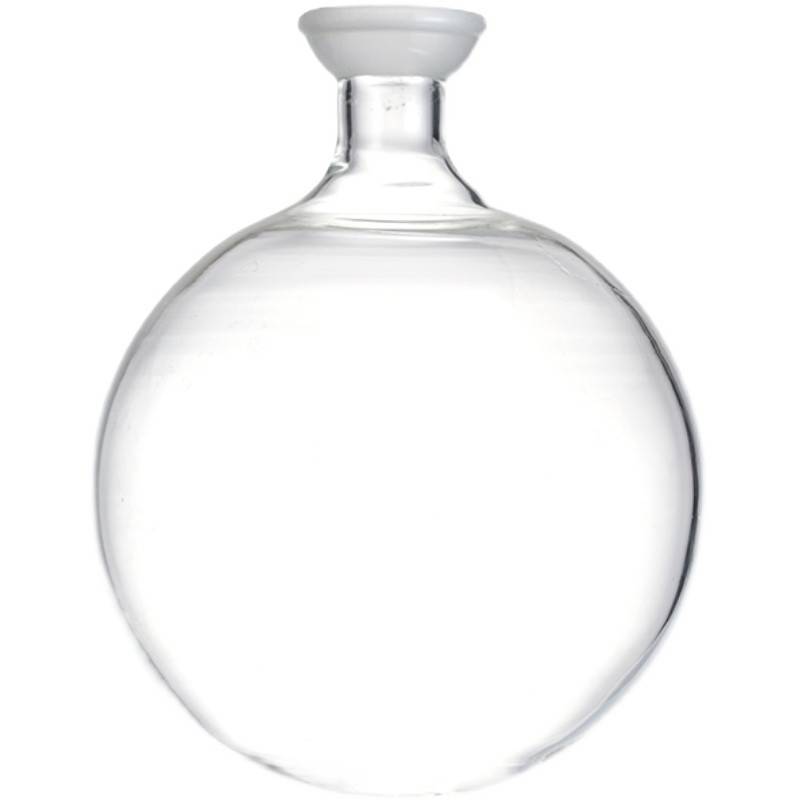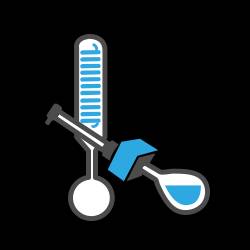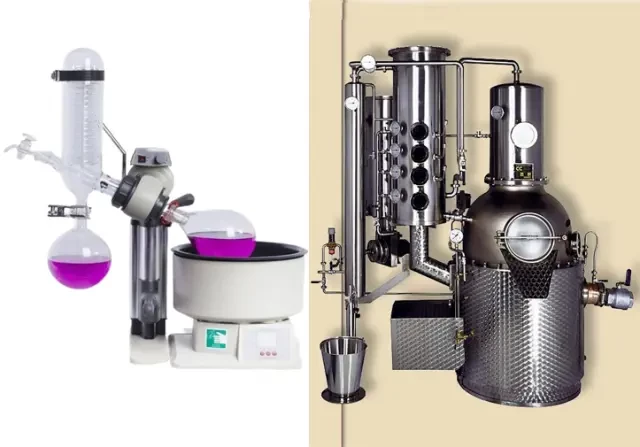Introduction: Rotary Evaporator vs Conventional Distillation
Table of Contents
- Introduction: Rotary Evaporator vs Conventional Distillation
- Working Principle: Reduced Pressure vs Atmospheric Pressure
- Increased Efficiency: Rotating Flask vs Static Setup
- Sealing ring: Wear resistance and corrosion resistance
- Cooling system: Rapid condensation to reduce steam influence
- Conclusion: Rotary Evaporator's Primary Advantage over Conventional Distillation
Rotary evaporator and conventional distillation are two widely used methods for separating mixtures. While both techniques aim to achieve the same end goal, they differ significantly in their principles and efficiency. Conventional distillation works by heating a mixture to its boiling point and collecting the vapor, while rotary evaporation involves evaporating a solvent under reduced pressure and collecting the condensed vapor in a rotating flask. The latter is often preferred due to its higher efficiency and wider range of applications, especially in the chemical and pharmaceutical industries.
Working Principle: Reduced Pressure vs Atmospheric Pressure
Rotary evaporators are laboratory equipment used for the evaporation of solvents and purification of organic compounds. They differ from conventional distillation in their working principle, which involves reduced pressure as opposed to atmospheric pressure.
Reduced Pressure System
In a rotary evaporator, the solvent is placed in a round-bottomed flask and heated under reduced pressure to lower its boiling point. This creates a vacuum that facilitates the evaporation of the solvent at a lower temperature, thus preserving heat-sensitive compounds. The vacuum system essentially reduces the pressure within the evaporator system, which ensures that the solvent boils at a lower temperature than usual. The rotating flask increases the surface area of the liquid, which in turn increases the rate of evaporation. When in contact with the condensing unit, the solvent vapor condenses and is collected in a receiving flask, leaving the concentrated compound in the flask.
Atmospheric Pressure System
On the other hand, conventional distillation involves boiling the mixture of solvents under atmospheric pressure and collecting the vapor as it condenses. This method is suitable for separating compounds with higher boiling points, but not effective for heat-sensitive compounds. At atmospheric pressure, the boiling point of the solvent is higher, which means that more heat energy is needed for it to evaporate.
Advantages of Reduced Pressure System
The reduced pressure in the rotary evaporator allows for better control over the evaporation process, resulting in a more efficient and precise separation of compounds. It also allows for faster evaporation rates, as the lower pressure and increased surface area of the liquid increase the rate at which molecules escape as vapor. This is particularly useful when dealing with heat-sensitive compounds, as the lower temperature reduces the risk of decomposition or degradation.
Disadvantages of Atmospheric Pressure System
In contrast, conventional distillation is less efficient and precise, as it relies on atmospheric pressure and higher boiling points of the solvents. It also requires more heat energy to evaporate the solvent, which may increase the risk of decomposition or degradation for heat-sensitive compounds.
In conclusion, the rotary evaporator's reduced pressure system provides a more efficient and controlled method of solvent evaporation that is particularly useful for heat-sensitive compounds. The ability to control the pressure and temperature during the evaporation process makes it a valuable tool for separation and purification in various fields of chemistry and pharmaceuticals.
Increased Efficiency: Rotating Flask vs Static Setup
In the conventional distillation process, a static setup is used where the surface area of the solvent is limited. This is where rotary evaporators come in with their rotating flasks that have revolutionized the process of distillation by offering a more efficient and less time-consuming method.

Role of Rotation in Efficiency
The rotation of the flask plays a crucial role in a rotary evaporation setup for two major reasons: increased surface area of the solvent and agitation of the water bath liquid. In a rotating flask, the solvent forms a thin film around the sides of the flask, greatly increasing the surface area and speeding up evaporation. This thin film formation helps to create a larger surface area for heating, which leads to faster evaporation speed of solvent, higher efficiency and better accuracy.
Agitation of the Water Bath Liquid
As the flask rotates, it agitates the liquid surrounding the flask in the water bath. This aids heat transfer to the flask and the solvent, which increases the rate of evaporation and therefore increases the efficiency of the process. The rotation of the flask ensures that the mixture can form a film on the inner surface of the flask, creating a larger surface for heating, contributing to the faster evaporation speed of solvent, which means higher efficiency and better accuracy.
Vacuum Pump and Reduced Boiling Point
Another factor that contributes to the increased efficiency of the rotary evaporator is the use of a vacuum pump. The vacuum pump reduces the boiling point of the solvent, which further speeds up the process. This increased efficiency not only saves time but also allows for a more accurate and precise separation of the desired compounds.
Collection of Solvent
In addition to the increased efficiency, the rotary evaporator allows for the collection of the solvent in a separate flask. This prevents the loss of any valuable compounds during the distillation process.
In summary, the rotating flask of the rotary evaporator greatly increases the surface area of the solvent and agitates the water bath liquid, which leads to faster evaporation speed of solvent, higher efficiency and better accuracy. The use of a vacuum pump reduces the boiling point of the solvent, further speeding up the process. Moreover, the collection of the solvent in a separate flask prevents the loss of any valuable compounds during the distillation process.
Sealing ring: Wear resistance and corrosion resistance
Rotary evaporators and conventional distillation are both techniques used in the separation of mixtures. However, rotary evaporators are different from conventional distillation in several ways, including the sealing ring. The sealing ring is the component that ensures that the system remains airtight and prevents any leaks.
Rotary evaporators use a special sealing ring that is both wear-resistant and corrosion-resistant. This is important because the sealing ring must be able to withstand the wear and tear that comes with constant use. The wear resistance of the sealing ring is crucial since rotary evaporators are often used for extended periods.
The corrosion resistance of the sealing ring is also important because many of the solvents and chemicals used in laboratory work can be corrosive. The sealing ring must be able to withstand exposure to these substances without deteriorating.
In contrast, conventional distillation often uses rubber or silicone gaskets that are not as durable or resistant to corrosion. These gaskets can easily get damaged from the constant water and chemicals passed through them.
The sealing ring of a rotary evaporator is made of fluoro rubber, which is a sturdy and quality material resistant to corrosion from harsh chemicals. The rubber seal is crafted of high-quality material that ensures it completely encloses to keep the vacuum temperature degrees intact. It is also resistant to corrosion.
The sealing ring is an essential component of a rotary evaporator. It ensures that the system remains airtight, preventing any leaks, and allows for efficient separation of mixtures. The wear resistance and corrosion resistance of the sealing ring make it an ideal choice for laboratory work.
In summary, the sealing ring is a crucial component of a rotary evaporator that sets it apart from conventional distillation techniques. The wear resistance and corrosion resistance of the sealing ring ensure that the system remains airtight, prevents any leaks, and allows for the efficient separation of mixtures.
Cooling system: Rapid condensation to reduce steam influence
The cooling system of a rotary evaporator is one of its distinguishing features from conventional distillation. This system uses rapid condensation to reduce steam influence, allowing the instrument to work with a wider range of solvents, including volatile and high boiling point liquids, which cannot be separated using traditional distillation methods.
The rapid condensation system is achieved through the use of a specialized condenser with a large surface area and efficient cooling. As the sample is heated and evaporates, the vapor travels through the vapor duct and into the condenser. The vapor is then rapidly cooled, causing it to condense and collect in the receiving flask. This process allows for the recovery and reuse of solvents, reducing waste and saving costs.
In contrast, conventional distillation relies on slower cooling methods, such as passing the vapor through a long and narrow tube or passing it through a series of cooling stages. These methods are less efficient and may not be able to separate certain types of solvents.
The use of a rapid condensation system in rotary evaporation provides significant benefits in laboratory settings, particularly in the fields of chemistry, biology, and pharmaceuticals. It allows for faster and more precise concentration and isolation of samples, which is important for research and analysis.
Overall, the cooling system of a rotary evaporator is an important feature that sets it apart from conventional distillation methods. Its ability to work with a wider range of solvents, recover and reuse solvents, and provide faster and more precise results make it a valuable instrument in laboratory settings.

Conclusion: Rotary Evaporator's Primary Advantage over Conventional Distillation
In conclusion, the rotary evaporator offers several significant advantages over conventional distillation methods. The rotating flask and reduced pressure work together to increase efficiency and distillation rates, making it ideal for chemical and pharmaceutical industries. Additionally, factors such as vacuum degree, sealing ring, rotary heating power, motor speed, and cooling system all contribute to improved distillation efficiency. The ability to rapidly condense steam and the rotary evaporator's higher distillation efficiency make it a more reliable and efficient option than traditional distillation methods. Overall, the rotary evaporator is a powerful tool for laboratories and industries that require high-quality distillation with increased efficiency and precision.
Related Products
Related Articles
- Step-by-Step Guide to Operating a Short Path Distillation Apparatus
- What Is Multiple Effect Evaporator?
- Understanding the Science Behind Short Path Distillation
- How Rotary Evaporator Can Improve the Quality of Your Distillate
- The Importance of Water Distillation in the Laboratory: Ensuring Purity and Quality for Accurate Results

